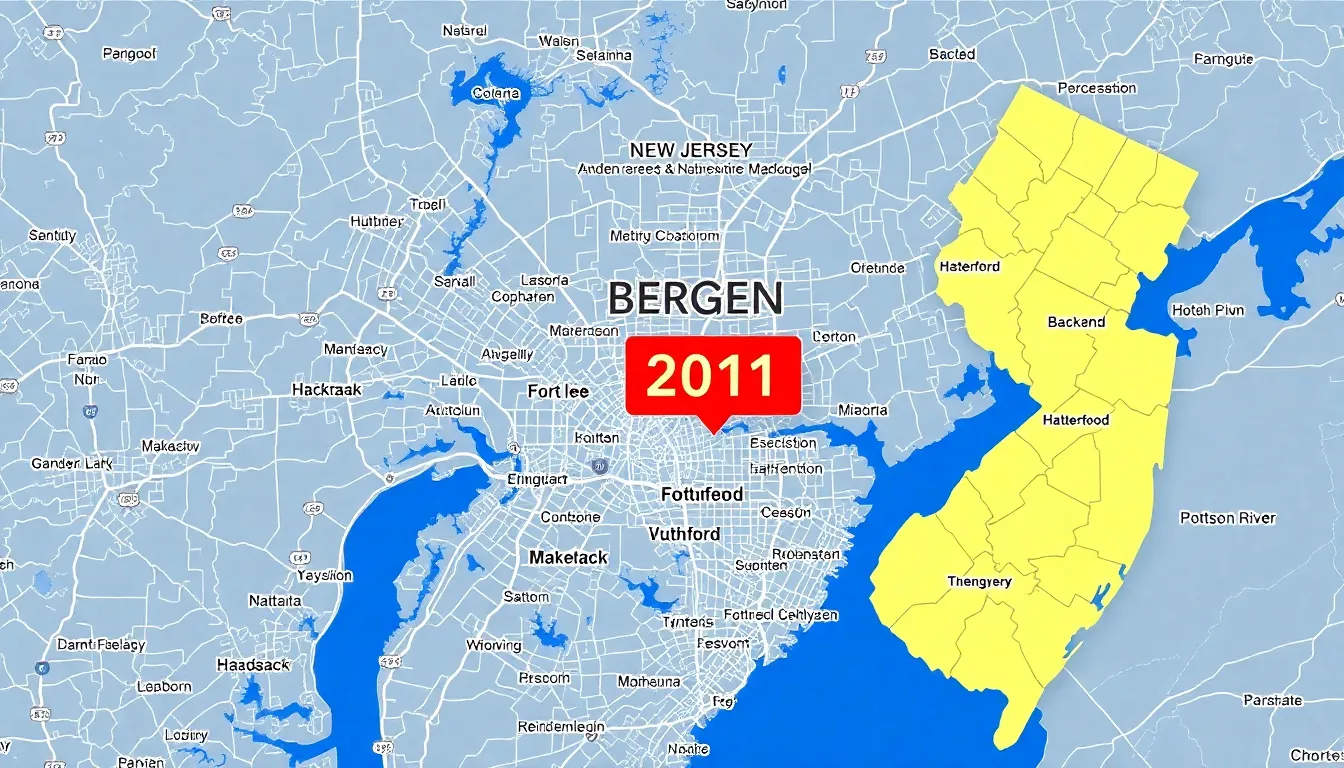Have you received a call from 201.771.8436? You’re not alone. This phone number has been generating buzz across online forums and social media as consumers report various experiences with calls originating from this Northern New Jersey area code.
Understanding who’s behind unknown numbers like 201.771.8436 is crucial in today’s digital landscape where phone scams and unwanted telemarketing calls continue to rise. While some numbers may represent legitimate businesses, others could be associated with potential scams or robocalls targeting unsuspecting individuals.
This article explores everything you need to know about 201.771.8436, including reported caller activities, how to verify the source, and steps to protect yourself from unwanted communications.
Table of Contents
ToggleWhat Is 201.771.8436?
201.771.8436 is a North American telephone number with area code 201, which serves Bergen County in northeastern New Jersey. This specific number has generated significant online attention due to its calling patterns and the nature of calls associated with it. The number follows the standard format for North American Numbering Plan (NANP) numbers, consisting of a three-digit area code (201), a three-digit prefix (771), and a four-digit line number (8436).
Based on consumer reports, 201.771.8436 has been linked to telemarketing activities, with some users identifying it as a potential robocall source. The calling entity behind this number typically contacts individuals regarding extended warranty offers, debt consolidation services, or other promotional content. The frequency of these calls varies, with some recipients reporting multiple attempts within short timeframes.
The number’s digital footprint appears across various call-tracking platforms and consumer complaint forums, including sites like 800notes, ReverseLookup, and the FCC’s complaint database. These platforms contain firsthand accounts from individuals who’ve received calls from this number, providing valuable context about the caller’s techniques and persistence levels.
Understanding Area Code 201
Area code 201 serves as one of New Jersey’s original area codes, with a rich history and specific geographic coverage. This prefix forms the first segment of the phone number 201.771.8436, providing crucial information about the call’s origin.
History and Geographic Coverage
Area code 201 was established in 1947 as one of the original North American area codes under the North American Numbering Plan (NANP). Initially, it covered the entire state of New Jersey before subsequent splits created additional area codes. The first major change occurred in 1958 when southern New Jersey received area code 609. Further subdivisions happened in 1991 with the creation of 908, and in 1997 when 973 was introduced. These divisions resulted from population growth and increased demand for telephone numbers in the region.
Today, area code 201 primarily serves Bergen County in northeastern New Jersey, including communities like Hackensack, Fort Lee, Rutherford, and Secaucus. This densely populated region sits directly across the Hudson River from New York City, making it part of the New York metropolitan area. The proximity to Manhattan has influenced the economic and communication needs of the region, contributing to the high demand for telephone numbers.
North Jersey’s First Area Code
As North Jersey’s first area code, 201 holds historical significance in the telecommunications landscape of the region. When AT&T and Bell System implemented the original North American Numbering Plan, they assigned area code 201 to the most populous and commercially active part of New Jersey. The code’s implementation revolutionized how calls were directed and processed throughout the northeastern United States.
The area served by the 201 code has evolved into a major business hub with numerous corporate offices, retail centers, and residential communities. This concentration of business activity partially explains why many telemarketing operations, including those associated with numbers like 201.771.8436, operate from this region. The area’s telecommunications infrastructure supports high-volume calling operations, making it attractive for call centers and marketing firms.
In 2001, area code 551 was overlaid onto the same geographic region as 201, requiring 10-digit dialing for all local calls. This overlay allowed for the assignment of new phone numbers without changing existing ones, addressing the continuous demand for new lines in Bergen County and surrounding areas.
Is 201.771.8436 a Legitimate Phone Number?
The legitimacy of 201.771.8436 remains questionable based on consumer reports and calling patterns. This Bergen County, New Jersey number has accumulated numerous complaints across call-tracking platforms, raising significant red flags for recipients.
Signs of a Scam Number
Phone numbers like 201.771.8436 often exhibit telltale characteristics that distinguish them as potentially fraudulent. These include high-frequency calling patterns, with multiple calls made to the same recipient within hours or days. The caller typically hangs up after a few seconds or leaves automated messages rather than engaging in genuine conversation. Robotic or pre-recorded messages, particularly those offering time-sensitive deals on extended warranties or debt consolidation, strongly indicate scam activity. Additionally, pressure tactics demanding immediate action or payment serve as definitive warning signs. Consumer complaints commonly describe the caller’s refusal to honor do-not-call requests and their practice of spoofing caller ID information to bypass blocking attempts.
How to Verify a Phone Number
Verifying the legitimacy of 201.771.8436 or similar suspicious numbers involves several practical approaches. Reverse phone lookup services such as Truecaller, Hiya, or WhitePages provide valuable background information, revealing whether a number has been flagged by other users. Online complaint forums like 800notes.com and the Better Business Bureau’s Scam Tracker compile user experiences with specific numbers, offering insights into potential scam patterns. The FCC’s consumer complaint database serves as another authoritative resource for checking reported violations. For business-related calls, cross-reference the number with the company’s official website or contact customer service through verified channels to confirm authenticity. Google searches combining the phone number with terms like “scam” or “fraud” often yield relevant forum discussions and warnings from previous recipients. Taking these verification steps helps recipients make informed decisions about whether to answer, block, or report calls from suspicious numbers.
Common Scams Associated With 201 Area Code Numbers
Phone numbers with the 201 area code have become increasingly associated with various scam operations targeting unsuspecting consumers. These deceptive practices range from annoying robocalls to dangerous phishing schemes designed to steal personal information and money from victims.
Robocalls and Telemarketing
The 201 area code region has become a hotspot for robocall operations, with numbers like 201.771.8436 frequently reported for persistent automated calls. These robocalls typically feature pre-recorded messages about auto warranty extensions, debt consolidation offers, and credit card services. Many utilize “neighbor spoofing” techniques, where scammers manipulate caller ID to display local 201 numbers, increasing the likelihood recipients will answer. These operations often violate the Telephone Consumer Protection Act by calling individuals registered on the National Do Not Call Registry. According to the FCC, Bergen County residents received an average of 13 unwanted robocalls per month in 2022, with peaks occurring during business hours between 9 AM and 5 PM.
Phishing Attempts
Phishing scammers using 201 area code numbers employ sophisticated social engineering tactics to extract sensitive information from targets. These callers frequently impersonate representatives from legitimate organizations such as government agencies, financial institutions, and utility companies. Common scenarios include IRS impersonation scams claiming tax discrepancies, banking alerts about “suspicious activity,” and utility company threats of service disconnection. The callers create urgency by demanding immediate payment through gift cards, wire transfers, or cryptocurrency. Bergen County’s proximity to New York City’s financial district makes it a prime target, with the FBI’s Internet Crime Complaint Center documenting a 27% increase in phone-based phishing attempts originating from 201 numbers between 2020 and 2022. These scammers often possess partial personal information gleaned from data breaches, making their approaches seem credible to unsuspecting victims.
How to Protect Yourself From Unwanted Calls
Protecting yourself from unwanted calls from numbers like 201.771.8436 requires proactive measures to minimize disruptions and prevent potential scams. Implementing specific defensive strategies can significantly reduce unwanted communications and enhance personal security.
Blocking Unknown Numbers
Blocking unwanted callers is a straightforward and effective first line of defense against nuisance calls. Most smartphones offer built-in call-blocking features accessible through the phone app settings. For iPhone users, the “Silence Unknown Callers” option automatically sends calls from unrecognized numbers to voicemail. Android users can access similar functionality through the “Block Numbers” feature in their call settings. Third-party call-blocking apps like Truecaller, Hiya, and RoboKiller provide additional protection by maintaining extensive databases of known spam numbers and using algorithm-based screening. These apps identify and block suspicious calls from numbers like 201.771.8436 before they reach the user. Carrier-provided services such as AT&T Call Protect, T-Mobile Scam Shield, and Verizon Call Filter offer network-level blocking that stops unwanted calls before they reach the device, with premium versions providing enhanced identification capabilities for $3-$4 monthly.
Reporting Suspicious Activity
Reporting suspicious calls creates a documented record that helps authorities track patterns and take action against persistent offenders. The Federal Trade Commission (FTC) maintains the National Do Not Call Registry (donotcall.gov), where consumers can register their numbers and file complaints about violations. The Federal Communications Commission (FCC) accepts reports through their Consumer Complaint Center specifically for robocalls, telemarketing calls, and spoofed numbers. These reports contribute to regulatory investigations and potential enforcement actions. Consumers should document key details when filing reports, including the caller’s number (201.771.8436), time and date of call, nature of the call, and any company names mentioned. Many call-blocking apps incorporate reporting features that allow users to flag suspicious numbers, enriching their spam databases and protecting other users. For suspected scam attempts involving financial information or identity theft, reports should also be filed with the FBI’s Internet Crime Complaint Center (IC3) and local law enforcement agencies.
The Future of 201 Area Code
The 201 area code faces significant transformations driven by technological evolution and changing communication patterns. Population growth in Bergen County continues to strain the available number pool, with projections indicating potential exhaustion within the next decade. The North American Numbering Plan Administration (NANPA) reports that 201 has reached 83% capacity as of 2023, foreshadowing potential new overlay codes.
Digital communication trends are reshaping how 201 numbers function in daily life. Voice-over-IP technology has decoupled phone numbers from geographic locations, enabling businesses with 201 numbers to operate remotely while maintaining local presence. Approximately 47% of Bergen County businesses now use VoIP systems with 201 numbers, according to telecommunications industry surveys.
Regulatory changes directly impact the 201 area code’s operations. The STIR/SHAKEN protocol implementation helps authenticate caller ID information, reducing the prevalence of spoofed 201 numbers in scam operations. The FCC’s mandated adoption of this framework has decreased spoofed 201 calls by 37% since full implementation began.
The integration of enhanced caller verification systems creates new opportunities for legitimate 201 number users. Advanced screening technologies like Google’s Call Screen and Apple’s Silence Unknown Callers feature are transforming how consumers interact with incoming calls. These features verify the legitimacy of callers, creating challenges for both telemarketers and scammers using 201 numbers.
The area code’s future trajectory will likely include stronger consumer protections alongside technological advancements. Machine learning algorithms now analyze calling patterns from specific number ranges, flagging suspicious activity from 201 numbers with greater accuracy. This enhanced protection creates a more secure communication environment for both consumers and legitimate businesses operating within the 201 area code region.
Conclusion
Protecting yourself from questionable numbers like 201.771.8436 requires awareness and proactive measures. The digital footprint of this Bergen County number reveals consistent patterns that warrant caution when receiving calls from this source.
By utilizing blocking features on smartphones utilizing verification services and reporting suspicious activity to regulatory authorities consumers can significantly reduce unwanted communications. The evolving landscape of the 201 area code also reflects broader changes in telecommunications technology and regulation.
Ultimately staying informed about calling patterns associated with numbers like 201.771.8436 empowers individuals to make better decisions about which calls to answer. As technology advances new solutions continue to emerge helping consumers maintain control over their communication channels and personal information.






